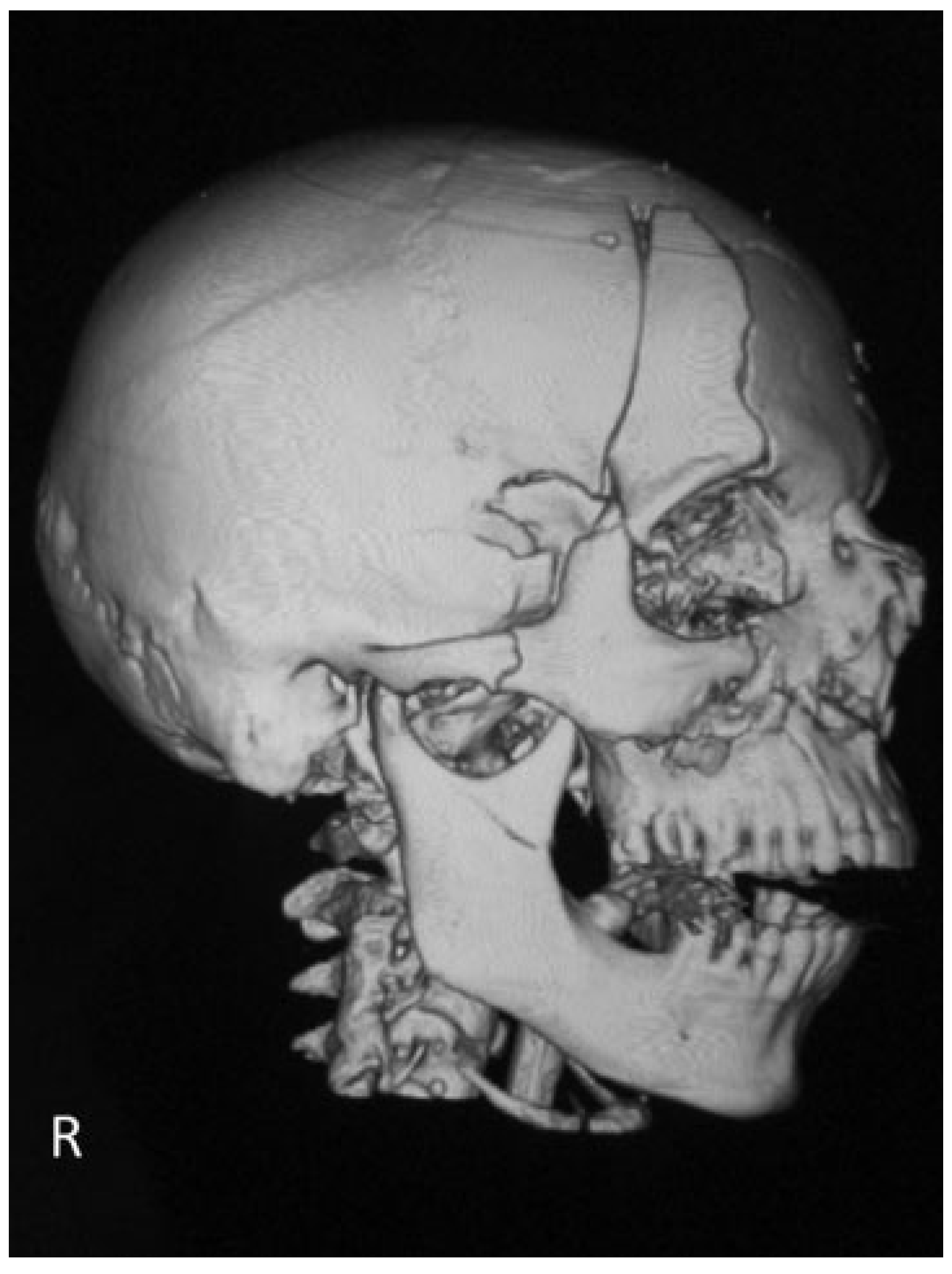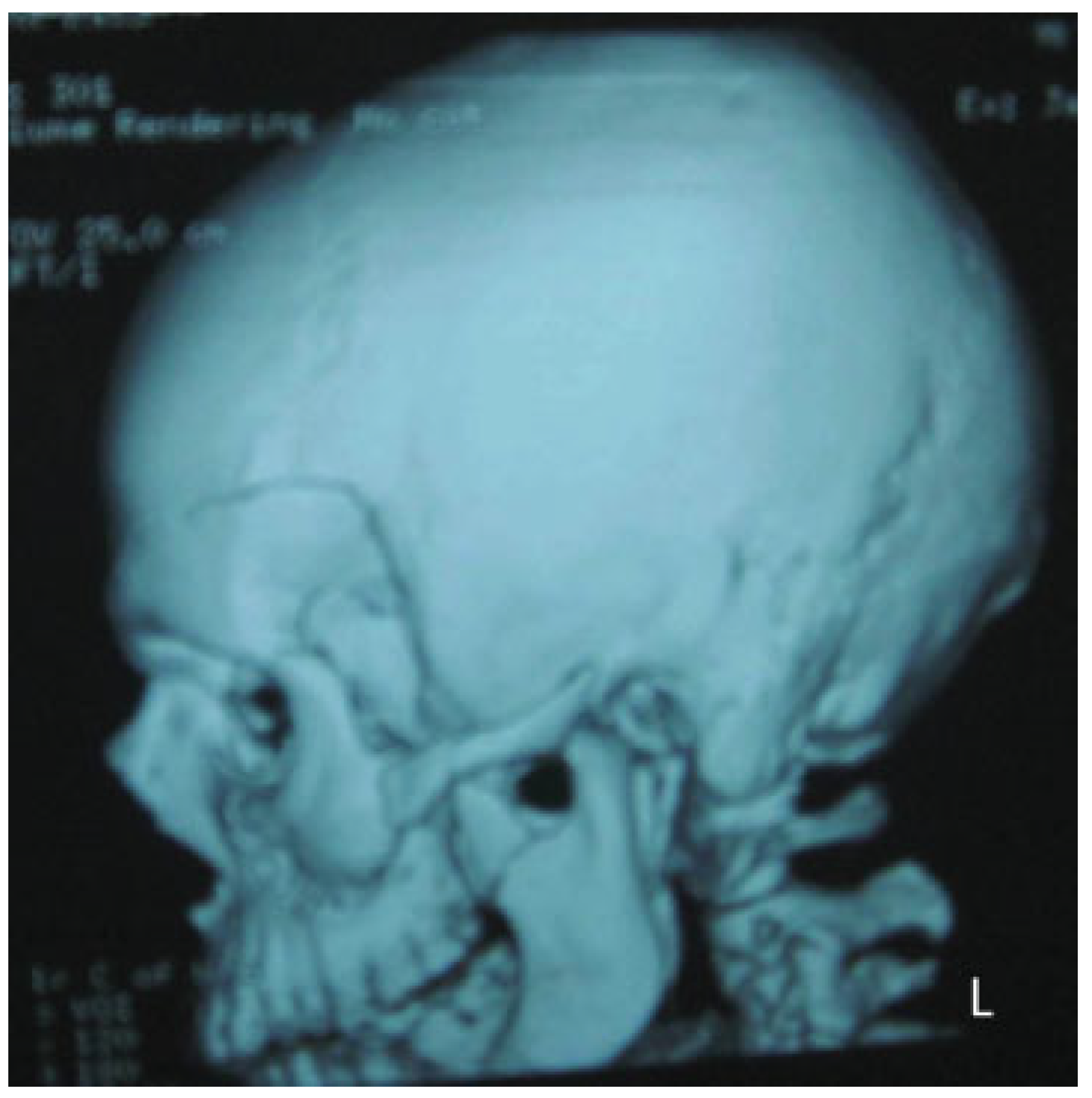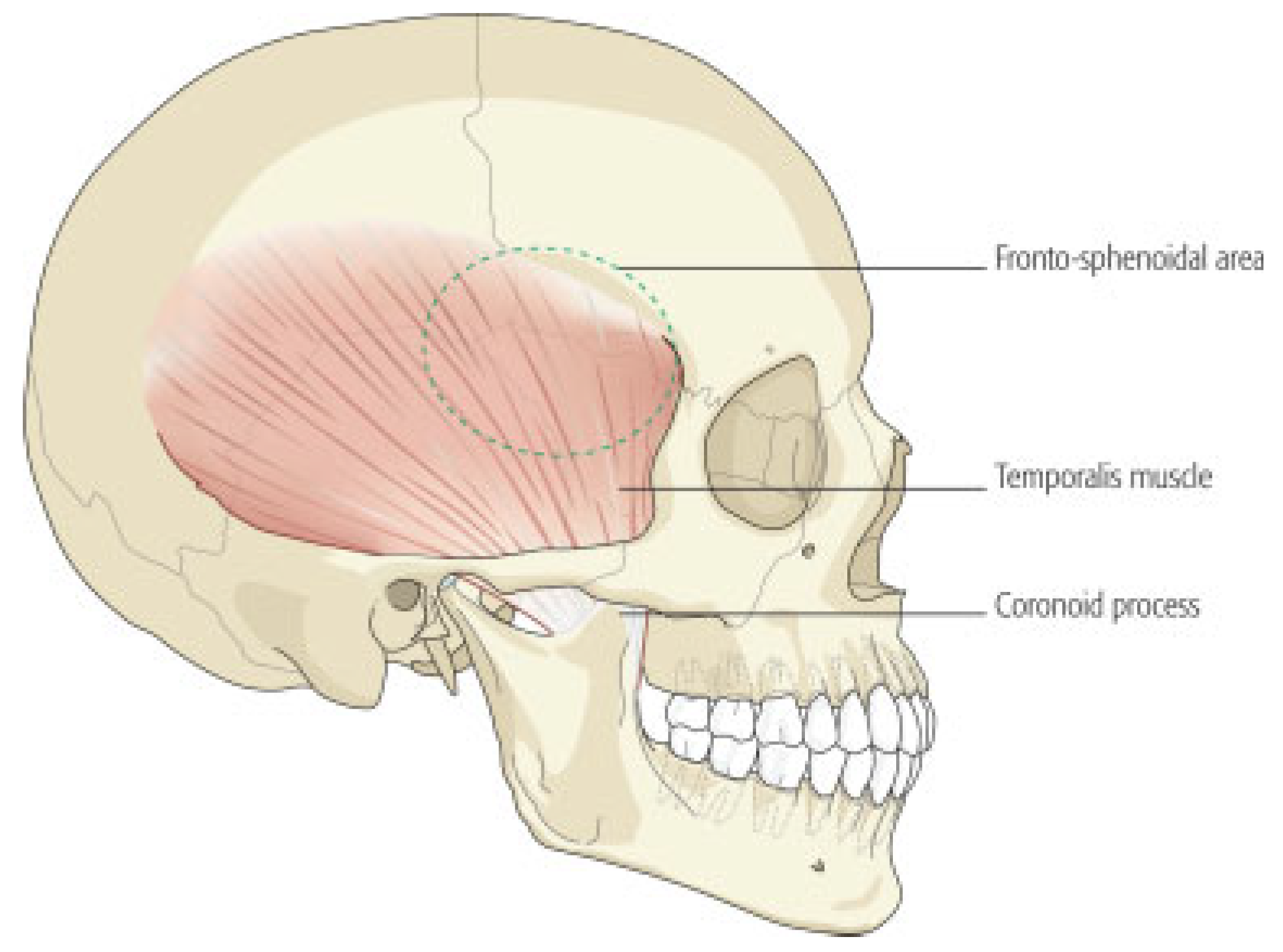Fracture of the Coronoid Process Associated with Frontosphenoidal Fractures
Abstract
- Intramuscular: where the fracture fragment is within the investing fascial attachment of the temporalis muscle.
- Submuscular: where the fracture is below the musculotendinous attachment. In these cases, there may be superior and medial displacement of the fragment.
Case Reports
Case 1
Case 2
Discussion
References
- Philip, M.; Sivarajasingam, V.; Shepherd, J. Bilateral reflex fracture of the coronoid process of the mandible. A case report. Int J Oral Maxillofac Surg 1999, 28, 195–196. [Google Scholar] [CrossRef] [PubMed]
- Rapidis, A.D.; Papavassiliou, D.; Papadimitriou, J.; Koundouris, J.; Zachariadis, N. Fractures of the coronoid process of the mandible. An analysis of 52 cases. Int J Oral Surg 1985, 14, 126–130. [Google Scholar] [PubMed]
- Natvig, P.; Sicher, H.; Fodor, P.B. The rare isolated fracture of the coronoid process of the mandible. Plast Reconstr Surg 1970, 46, 168–172. [Google Scholar] [PubMed]
- Scrimshaw, G.C. Malar/orbital/zygomatic fracture causing fracture of underlying coronoid process. J Trauma 1978, 18, 367–368. [Google Scholar] [CrossRef] [PubMed]
- Takenoshita, Y.; Enomoto, T.; Oka, M. Healing of fractures of the coronoid process: Report of cases. J Oral Maxillofac Surg 1993, 51, 200–204. [Google Scholar] [PubMed]
- Bannister, L.H.; Berry, M.M.; Collins, P.; Dyson, M.; Dussek, J.E.; Ferguson, M.W.J. Gray’s Anatomy. In The Anatomical Basis of Medicine and Surgery, 38th ed.; Churchill Livingstone: London, UK, 1999. [Google Scholar]
- Guyton, A.C.; Hall, J.E. Text Book of Human Physiology; W.B. Saunders: London, UK, 1996; pp. 82–83. [Google Scholar]
- Rowe, N.L.; William, J.L. Maxillofacial Injuries; Churchill Livingstone: London, UK, 1985; Volume 1. [Google Scholar]
- Fonseca, W.; Betts, B. Powers. In Oral and Maxillofacial Trauma, 3rd ed.; Elsevier Saunders: St. Louis, MO, USA, 2005; Volume 1. [Google Scholar]
- de Oliveira, D.M.; Vasconcellos, R.J.; Laureano Filho, J.R.; Cypriano, R.V. Fracture of the coronoid and pterygoid processes by firearms: Case report. Braz Dent J 2007, 18, 168–170. [Google Scholar] [CrossRef] [PubMed][Green Version]
- Johnson, R.L. Unusual (coronoid) fractures of mandible: Report of case. J Oral Surg 1958, 16, 73–77. [Google Scholar] [PubMed]
- Yaremchuk, M.J. Rigid internal fixation of a displaced mandibular coronoid fracture. J Craniofac Surg 1992, 3, 226–229. [Google Scholar] [CrossRef] [PubMed]




© 2014 by the author. The Author(s) 2014.
Share and Cite
Baliga, M.; Baptist, J. Fracture of the Coronoid Process Associated with Frontosphenoidal Fractures. Craniomaxillofac. Trauma Reconstr. 2014, 7, 330-332. https://doi.org/10.1055/s-0034-1378177
Baliga M, Baptist J. Fracture of the Coronoid Process Associated with Frontosphenoidal Fractures. Craniomaxillofacial Trauma & Reconstruction. 2014; 7(4):330-332. https://doi.org/10.1055/s-0034-1378177
Chicago/Turabian StyleBaliga, Mohan, and Joanna Baptist. 2014. "Fracture of the Coronoid Process Associated with Frontosphenoidal Fractures" Craniomaxillofacial Trauma & Reconstruction 7, no. 4: 330-332. https://doi.org/10.1055/s-0034-1378177
APA StyleBaliga, M., & Baptist, J. (2014). Fracture of the Coronoid Process Associated with Frontosphenoidal Fractures. Craniomaxillofacial Trauma & Reconstruction, 7(4), 330-332. https://doi.org/10.1055/s-0034-1378177


